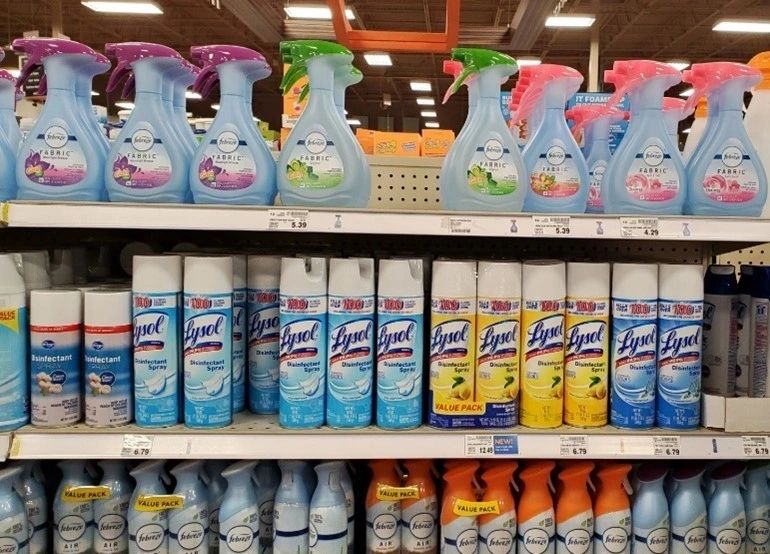Getting Started With Our Services
We understand that every odor elimination project is unique. While there may be similarities, each situation requires a personalized approach to achieve the desired outcome of a healthier living environment. That's why our founder, Gregory Johnson, personally conducts initial consultations with all our clients. During the consultation, Gregory will speak with you directly to better understand the source of the odor and other factors that may be contributing to the problem.
Gregory will gather all the necessary information through his short interview process to conduct an on-site Odor Audit. During this audit, he will confirm the information you provided during the consultation and prepare a proposal for complete odor elimination.
Be Ready With Answers to These Questions:
- Do you know what the smell is? Has anyone described it differently?
- How long have the current occupants occupied the property?
- When was the property built?
- What is the square footage?
- Has the HVAC system been properly maintained?
- How many occupants were/are smokers?
- What kind of pets are living on the property?
- Is there carpet on the property? If so, is it in the whole interior?
- Describe the window treatments.
- Has the property been recently remodeled, renovated, or repainted?
- What have you tried to eliminate the odor yourself? Describe what you did.
- Are you selling?
- When is the best time for an Odor Audit?

Odor Audit
Gregory will need complete access to the property to properly assess the odor and the possible contributors and locations where the odor may be concentrated. No work has been accomplished at this point, but it is helping Gregory develop the precise steps to take.
These are independent factors required for the complete odor assessment. They are:
- Intensity or pervasiveness - a measure of the perceived strength of the odor
- Character - relates to the mental association made by sensing the odor
- Hedonics - the relative pleasantness or unpleasantness of the odor
- Detectability or quantity - the amount of cleaning product to reduce an odor to its minimum detectable threshold odor concentration
- Mass - the volume of odorous air produced
Your odor audit will accomplish the following:
Once the Odor Audit has been completed, you will receive a detailed proposal describing the customized plan for removing your unique odor problem.
Odor Elimination
Each odor has its own properties that must be accounted for during elimination. However, the general methods used to eliminate most property odors include:

Systematic Process
Methodical and Organized
With hundreds of successful odor-elimination projects under his belt, Gregory brings a wealth of knowledge to every project. His specialized products and techniques are unlike anything you'll find at your local grocery or big box store. Lingering and persistent odors require a different approach than what is typically advertised on TV.

By the end of 2023, the household air care product market is estimated to generate $12 billion in revenue from household air care products. This is big business. The pet odor control and clean-up product market is also generating large amounts, with an estimated $8.6 billion by the end of 2025.
These products are not aimed at odor elimination. Most are for odor control. In fact, these industries are banking on you continuing to purchase from them. They want you to buy their air purification bags, odor-removing gels, air purifiers, sprays, powders, candles, plugins, scented oils, wax melts, etc.
These Solutions Just Don't Work. The use of air fresheners at home might aid in relaxation, mood, or ambiance. This could play a vital part in the demand for household air care products. Moreover, the lack of time to keep homes clean every day due to tight work schedules is expected to highlight the global household air care products market.
Unfortunately, these products do not eliminate the cause or the source of hazardous odors. Consumers of these products often believe that these products will be adequate to eliminate odors when in actuality, they only help to temporarily mask them. The odor will return, and the potentially hazardous situation behind the odor hasn't been addressed.
But what about Ozone? There are several service providers who use ozone generators solely to address lingering and persistent odors. The trouble with ozone is that the Environmental Protection Agency (EPA) is firmly against the use of ozone generators. The EPA has reviewed scientific studies and concluded that ozone concentrations which don't exceed what's safe for human life are highly unlikely to remove lingering and persistent odors.
The EPA notes that concentrations high enough to remove odors are typically high enough to cause damage to fabrics, plants, rubber, electrical wire coatings, and the pigments and dyes in some artwork. High ozone concentrations also pose multiple health risks.
Ozone Health Effects and Standards
Health Effects
The potential risk of experiencing:
Health Standards*
* PPM = Parts Per Million
Ozone machines and generators are useful as a small part of the overall odor-elimination process. Typically they could be used in the final stages of treatment to help dissipate any residual odors associated with the treatment process.
Summary
Don't waste your time and money on generic "over-the-counter" odor control products; they're not designed to eliminate problem odors. These products only act as a temporary solution, like a band-aid, and won't completely eliminate hazardous and harmful odors.
To solve this issue, a systematic approach by a professional specializing in removing hazardous odors is required. With years of experience and hundreds of successful odor-elimination projects, Gregory Johnson can provide you and your family with a healthier environment. Say goodbye to lingering and persistent odors and breathe easier with our professional odor elimination services. Trust us to eliminate all indoor odors, not just mask them, and enjoy a fresh and safe living environment.